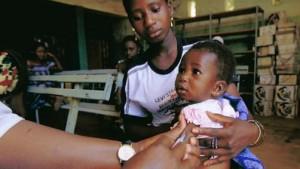
Bermant began his project by considering one of the primary obstacles to current vaccine distribution: refrigeration. When a vaccine is exposed to any temperature outside of its ‘comfort zone’ its effectiveness is decreased. It doesn’t matter whether the stress is caused by being too hot or being too cold, either case results in damage to the vaccine. For this reason, vaccines currently require storage space in refrigerated units that, unfortunately, aren’t always available.
Rather than simply bemoan the situation, Bremant put himself to work thinking about alternatives that wouldn’t require the refrigeration in order to expand the possibilities for global vaccine distribution. His final design eliminates the need for temperature-controlled storage by housing the freeze-dried vaccine in one unit of a syringe and sterile water in a other. The vaccine is released into the water by turning the handle on the syringe thus creating the injectable solution only in the moments just before its use.
“I found the concept of 3D printing the modified syringe device particularly attractive because I recognized that the 3D printing process is a rapid, economical, and convenient method for developing tangible prototypes. 3D printing facilitated the creation of a prototype and provided me with a tangible and functional model that I can use for demonstrations.”
This is yet another example of the creativity being unleashed among youth who understand 3D technologies as simply another tool in their intellectual landscape. While the device, as it is currently designed, isn’t ready for mass production due to cost, the idea itself is representative of the kind of design thinking that will continue to make the creative industries a leader in transforming our world.
Not only is Bremant exceptionally clever, he is also good hearted and cited as a reason for not patenting his technology the hope that others will be able to improve upon its concept and develop something similar that might bring vaccines to millions of people around the world.
Is this 3D printed syringe the solution to a problem that has plagued society for decades? Let’s hear your feedback in the 3D printed syringe forum thread on 3DPB.com.